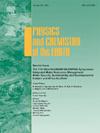东南亚沿海环境中的微塑料污染:系统综述
IF 3
3区 地球科学
Q2 GEOSCIENCES, MULTIDISCIPLINARY
引用次数: 0
摘要
东南亚地区反复出现的微塑料污染问题已成为对生物多样性、经济和公众健康产生严重影响的重大挑战。尽管努力解决这一问题,但缺乏对该地区来源和分布的深入研究,阻碍了有效的政策制定和干预措施。本研究旨在全面概述东南亚沿海环境中MPs的研究现状。我们具体解决了以下问题:目前东南亚沿海地区存在的MPs的组成和丰度是什么,以及在沿海环境中进行的研究中存在哪些信息差距?文章通过Web of Science和Scopus数据库检索,出版日期从2019年到2022年不等。我们对东南亚沿海环境中39项多微粒污染研究的系统回顾表明,多微粒在该地区普遍存在,在沿海水域、沉积物和大气中的浓度分别高达238,000个颗粒L−1、200,000个颗粒kg−1和40个颗粒m−2 d−1。此外,我们的研究发现,在沿海环境的所有MPs研究中,只有一小部分(n = 1)研究了大气中MPs的组成。尽管该地区有大量的国会议员,但对来源和运输的全面研究却很缺乏。我们的研究结果强调,迫切需要对东南亚MPs的来源、分布和影响进行更标准化的抽样和更有针对性的研究。本文章由计算机程序翻译,如有差异,请以英文原文为准。

Microplastics contamination in coastal environment of Southeast Asia: A systematic review
The recurrent issue of microplastic (MP) pollution in Southeast Asia has become a major challenge with serious repercussions on biodiversity, economy, and public health. Despite efforts to address the problem, a lack of thorough research on the sources, and distribution in the region impedes effective policymaking and intervention measures. This study aims to provide a comprehensive overview of the state of research on MPs in the coastal environment of Southeast Asia. We specifically addressed the following questions: What is the current composition and abundance of MPs existing in Southeast Asia's coastal areas, and what information gaps exist in the studies conducted in the coastal environment? Articles were retrieved using the Web of Science and Scopus databases, with publication dates ranging from 2019 to 2022. Our systematic review of 39 studies on MP pollution in the coastal environment of Southeast Asia reveals that MPs are prevalent in the region, with concentrations of up to 238,000 particles L−1, >200,000 particles kg−1 and 40 particles m−2 d−1 in the coastal water, sediment and atmosphere, respectively. In addition, our study found that only a small proportion (n = 1) of all MP studies in the coastal environment addressed the composition of MPs in the atmosphere. Despite the significant abundance of MPs in the region, there has been a scarcity of comprehensive research on the sources and transport. Our findings highlight the critical need for more standardized sampling and more targeted research on the sources, distribution, and effect of MPs across Southeast Asia.
求助全文
通过发布文献求助,成功后即可免费获取论文全文。
去求助
来源期刊

Physics and Chemistry of the Earth
地学-地球科学综合
CiteScore
5.40
自引率
2.70%
发文量
176
审稿时长
31.6 weeks
期刊介绍:
Physics and Chemistry of the Earth is an international interdisciplinary journal for the rapid publication of collections of refereed communications in separate thematic issues, either stemming from scientific meetings, or, especially compiled for the occasion. There is no restriction on the length of articles published in the journal. Physics and Chemistry of the Earth incorporates the separate Parts A, B and C which existed until the end of 2001.
Please note: the Editors are unable to consider submissions that are not invited or linked to a thematic issue. Please do not submit unsolicited papers.
The journal covers the following subject areas:
-Solid Earth and Geodesy:
(geology, geochemistry, tectonophysics, seismology, volcanology, palaeomagnetism and rock magnetism, electromagnetism and potential fields, marine and environmental geosciences as well as geodesy).
-Hydrology, Oceans and Atmosphere:
(hydrology and water resources research, engineering and management, oceanography and oceanic chemistry, shelf, sea, lake and river sciences, meteorology and atmospheric sciences incl. chemistry as well as climatology and glaciology).
-Solar-Terrestrial and Planetary Science:
(solar, heliospheric and solar-planetary sciences, geology, geophysics and atmospheric sciences of planets, satellites and small bodies as well as cosmochemistry and exobiology).
 求助内容:
求助内容: 应助结果提醒方式:
应助结果提醒方式:


